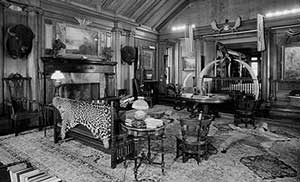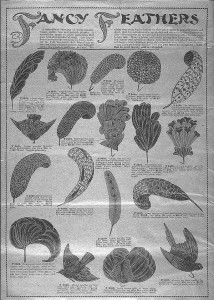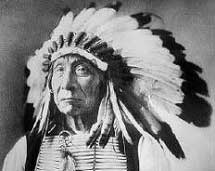Occasionally, walking through the wilderness, I find some bird feathers on the ground, due in no small part to my work in the woods. However, coming upon a feather the likes of which I had never seen, the moment gave me pause. My mind naturally wandered to what bird it had come from. It then wandered to worry; what if this feather belonged to a bird, one found in the very forests that I work, but rare, endangered, and protected?
I looked around – if this were indeed a rare feather from an endangered bird – was I allowed to take it? Who would stop me from taking it?
And so I find myself, a lone naturalist in the woods, contemplating the legalities of holding an unknown feather.

What is “Bird Law” and where did it come from in the United States?
 1900 is a key year, the end of 60 years of westward expansion in the United States. This time was characterized by the populations moving east to west, discovering for themselves the natural bounty the area had to offer and often hunting it down, like the American Bison or Passenger Pigeon.
1900 is a key year, the end of 60 years of westward expansion in the United States. This time was characterized by the populations moving east to west, discovering for themselves the natural bounty the area had to offer and often hunting it down, like the American Bison or Passenger Pigeon.
Soon Theodore Roosevelt would be elected President – a man somewhat famous for his love of nature as well as his trophy room (aka, “The Lion’s Pride”). He stood as a symbol for masculine identity for his time and generations into the future, and his trophy room, filled with exotic and dangerous animals, was a symbol of masculine success.
 On the other hand, the sign of feminine social status was the use of birds and feathers in their hats and dresses.
On the other hand, the sign of feminine social status was the use of birds and feathers in their hats and dresses.
The American Ornithologist Union estimated that by 1886, about five million birds were killed each year to supply the production of ladies’ hats, dresses and accessories. Due to this large amount, early conservationists got together and lobbied for legal action to protect the killing of birds, especially rare birds, in the United States.
The Lacey Act (aka the Lacey Bird and Game Act), passed in 1900, prohibited game taken illegally in one state from being shipped across state lines to another state. It was the first major law engaged to curb the peaking annihilation of so many bird species.
 After the Lacey Act, 1918 saw passage of the Migratory Bird Treaty Act, which protected all migratory birds and their parts; including eggs, nests and feathers. Even today the U.S. Fish and Wildlife Service posts a list of the over 100 migratory birds who are protected.
After the Lacey Act, 1918 saw passage of the Migratory Bird Treaty Act, which protected all migratory birds and their parts; including eggs, nests and feathers. Even today the U.S. Fish and Wildlife Service posts a list of the over 100 migratory birds who are protected.
And so it became that killing birds and taking their feathers was justly banned in these United States. The possession of these materials meant not just a lawbreaker, but someone inherently selfish and unwilling to see the bigger picture.
“But I didn’t kill the bird, I just found a feather!” How do we know you didn’t kill the bird? It’s too easy for someone to conveniently “find” a bunch of feathers that fit perfectly on the hat that they just happen to have for sale. To avoid this scenario, the law defines any possession as illegal.
But wait…it’s never that simple.
 For centuries, long before European immigrants began hunting birds for fashion statements in a social hierarchy, many Native American tribes held birds, such as the Bald Eagle, in high regard. Theses native creatures were sacred to the homeland of several indigenous groups and their feathers were used in rituals.
For centuries, long before European immigrants began hunting birds for fashion statements in a social hierarchy, many Native American tribes held birds, such as the Bald Eagle, in high regard. Theses native creatures were sacred to the homeland of several indigenous groups and their feathers were used in rituals.
As it turns out, with the Native American Rights Movement of the 1970s, Native American groups had to lobby the United States for the protection to use rare feathers in sacred practices. As a result the U.S. Fish & Wildlife Service created the National Eagle Repository so that Native American groups could access Eagle parts and feathers for their religious practices without being held to the same legal standard as people making fashionable hats.
Back To The Beginning
 So there I was, holding a possibly rare feather, and all I could do was ask myself:
So there I was, holding a possibly rare feather, and all I could do was ask myself:
“Why did I feel like I wanted to hold onto this feather”?
Certainly not for a fashion statement. Was having this feather sacred to me with roots tying to my family, community and sense of identity? No.
Most likely it would be a cool thing to hold onto for a short bit, or just store away in a safe place, bringing it out only when I taught a bird class to students. And when I did show it to students, what would I tell them? That this is a possibly rare feather that is illegal to own but that it was all right for me to have it because I was using it as a teaching tool? While based upon good intentions, this sounds a little hypocritical.
So, Find A Feather…Pick it Up?
Well folks, in all honesty I knew the answer to the title question the moment I stumbled upon the feather; a lifetime of outdoor work and education has not been lost on me: “Take Only Pictures, Leave Only Footprints.”
My real use for the feather was to help me, once again, recognize the complexity and dynamism of natural systems and our role within them. Enjoy the picture, and while you discover natural wonders I encourage you to take lots of them yourself… (pictures, that is).
For more information on Bird Law:
- http://www.fws.gov/migratorybirds/regulationspolicies/treatlaw.html
- http://www.farnsworthmuseum.org/blog-entry/feather-trade-and-formation-audubon-society
- http://www.americanhistory.si.edu/feather/ftfa.htm
- http://www.fws.gov/migratorybirds/regulationspolicies/mbta/MBTANDX.HTML
For more information on Native American religious rights and the National Eagle Repository:
- http://www.nps.gov/history/local-law/FHPL_IndianRelFreAct.pdf
- http://www.fws.gov/forms/3-200-15b.pdf
At High Trails Outdoor Science School, we literally force our instructors to write about elementary outdoor education, teaching outside, learning outside, our dirty classroom (the forest…gosh), environmental science, outdoor science, and all other tree hugging student and kid loving things that keep us engaged, passionate, driven, loving our job, digging our life, and spreading the word to anyone whose attention we can hold for long enough to actually make it through reading this entire sentence. Whew…. www.dirtyclassroom.com

Comments are closed.